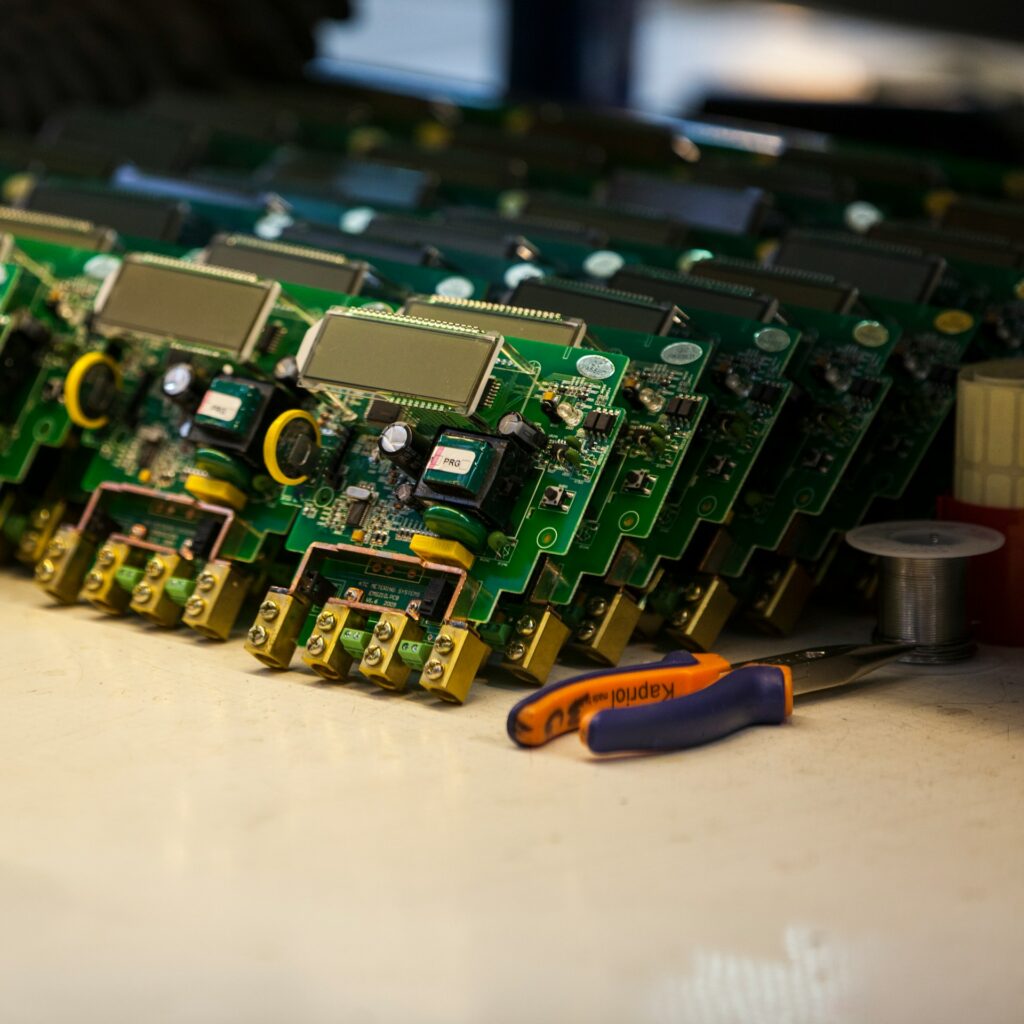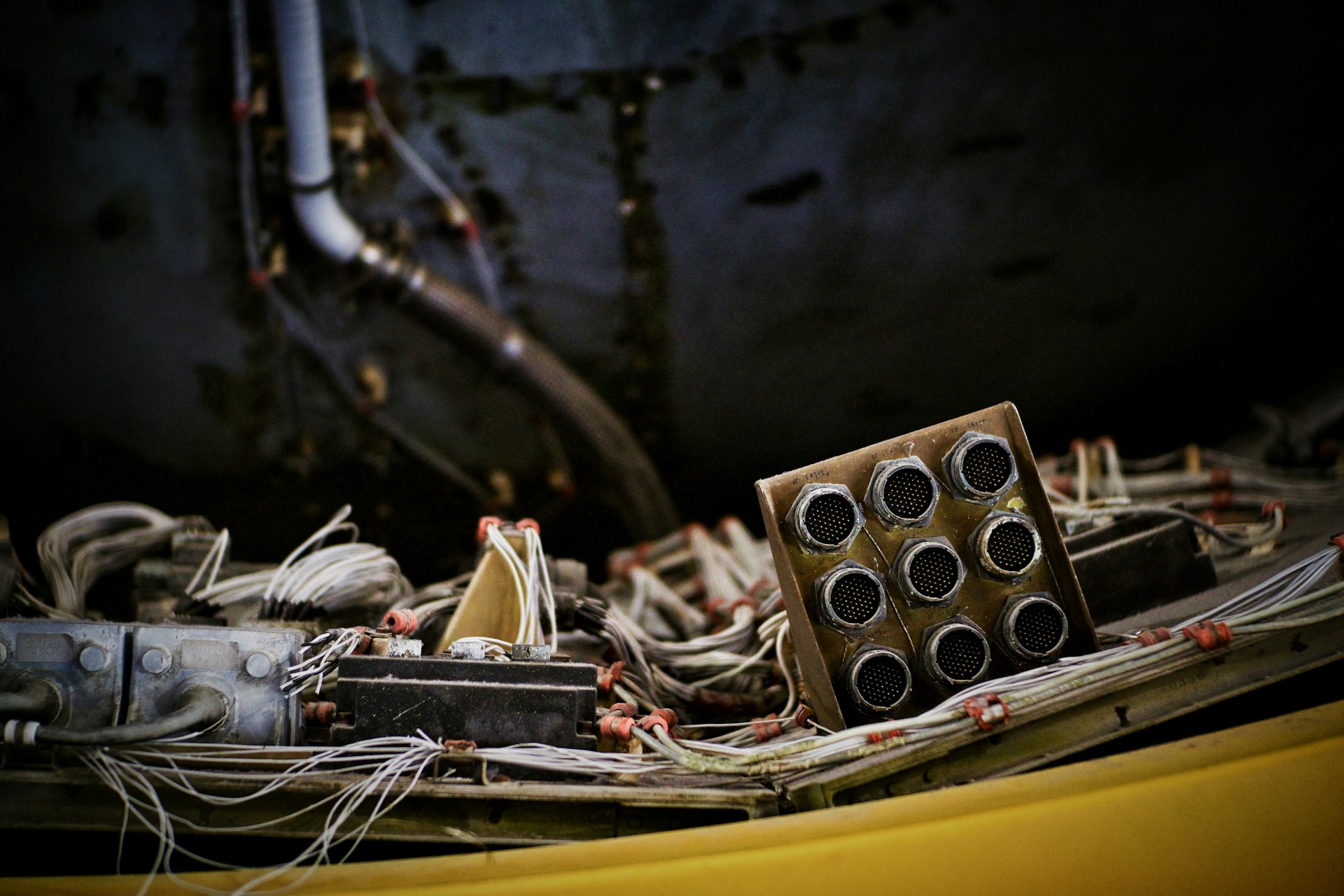Scrapping Electronic Waste – E-Scrapping
Electronics scrap recycling is the process of recovering valuable materials from discarded electronic devices, commonly known as e-scrap or e-waste. This practice is important for reducing environmental impact, conserving resources, and minimizing the fastest growing waste stream in the world.
With the proliferation of electronic devices, from mobile phones and personal computers to medical and office equipment, the generation of e-scrap is expected to increase significantly. E scrap generation is expected to double by 2030, highlighting the urgent need to address the environmental impact and transform this waste into new opportunities for recovery and recycling of critical materials.
Types of Electronics Scrap
Below you can see a quick table of the types of e-waste and where it comes from.
Types of E-Scrap and Their Sources
| Type of E-Scrap | Source |
|---|---|
| Household Electronics | Home appliances, personal computers, mobile phones |
| Office Equipment | Printers, copiers, computers, servers |
| Medical Devices | Diagnostic equipment, monitoring devices, imaging systems |
| Industrial Electronics | Machinery control units, industrial automation systems |
| Commercial Electronics | Point of sale systems, commercial refrigeration units, security systems |
| Telecommunication Devices | Telephones, routers, modems, network infrastructure |
Household Electronics
Household electronics such as home appliances, personal computers, and mobile phones are among the most commonly recycled e-scrap items. These devices often contain precious metals like gold, silver, and platinum, as well as other recyclable materials such as plastics and glass.
Office Equipment and Medical Devices
Medical or office equipment like printers and copiers, along with medical devices, also contribute significantly to e-scrap. These items are often more complex and dynamic in their feedstock due to their specialized components and materials. The recycling value chain for these types of e-scrap involves careful dismantling and sorting to recover critical materials efficiently.
Industrial and Commercial Electronics
Industrial electronics, such as machinery control units and large-scale equipment, pose unique challenges due to their size and complexity. The fragmented recycling value chain for these items often requires specialized facilities and processes to handle their critical material recovery.
The Recycling Process
Collection and Sorting
The first step in the e-scrap recycling process is the collection of discarded electronics from households, businesses, and industrial sites. This can be done through designated scrap yards, municipal collection points, or specialized pick-up services. Once collected, the e-scrap is sorted based on the type and condition of the items.
Dismantling and Processing
After sorting, e-scrap is dismantled to separate components like circuit boards, memory chips, and power supplies. This step is crucial for isolating valuable materials, including advanced materials and precious metals. The dismantling process can be manual or automated, depending on the facility’s capabilities.
Material Recovery
E scrap recovery is crucial in addressing challenges in the e-scrap recycling value chain. The recovered components are then processed to extract raw materials. For example, circuit boards are treated to recover metals, while plastics and other materials are separated for further recycling. This step involves various chemical and physical processes designed to optimize the extraction of valuable elements.
Benefits of Electronics Scrap Recycling
Environmental Impact
Recycling e-scrap significantly reduces the environmental impact associated with electronic waste. By diverting e-scrap from landfills, we prevent the release of toxic substances into the environment and reduce the life cycle impacts of electronics. Additionally, recycling helps conserve natural resources by reusing materials instead of extracting new ones.
Economic Benefits
E-scrap recycling also has substantial economic benefits. The raw material value recovered from e-scrap can be significant, providing a financial incentive for recycling programs by increasing the amount of recovered critical materials. Moreover, the industry generates jobs in collection, processing, and recycling facilities, contributing to economic growth.
Resource Conservation
Recycling electronics helps conserve critical materials that are essential for manufacturing new products. By recovering materials like gold, silver, and rare earth elements, we reduce the need for mining and lower the environmental footprint of resource extraction.
Challenges in Electronics Scrap Recycling
Fragmented Recycling Value Chain
One of the major challenges in e-scrap recycling is the fragmented nature of the recycling value chain. With numerous stakeholders involved, from manufacturers and consumers to recyclers and regulatory bodies, coordinating efforts can be difficult. This fragmentation often leads to inefficiencies and gaps in the recycling process.
Complex and Dynamic Feedstock
E-scrap is characterized by its complex and dynamic feedstock, making it challenging to process. The variety of materials and components in electronic devices requires specialized techniques and technologies for effective recycling. This complexity often results in numerous roadblocks that hinder the recovery of valuable materials.
Technological and Economic Barriers
Technological limitations and economic factors also pose significant challenges. Advanced recycling technologies can be expensive to implement, and the economic viability of recycling programs depends on fluctuating market prices for recovered materials.
Optimising the technoeconomic strategy is essential to making recycling efforts sustainable and profitable. National laboratory analysis support can provide the necessary financial and analytical assistance to prototype innovations and optimize these strategies in e-scrap recycling.

Best Practices for Electronics Scrap Recycling
Implementing Innovative Approaches
To overcome the challenges of e-scrap recycling, it is crucial to stimulate innovative approaches. This involves investing in research and development to create more efficient recycling technologies and processes. Encouraging collaboration between private entities, academic institutions, and government agencies can lead to significant advancements in the field.
Optimising the Recycling Value Chain
Streamlining the recycling value chain can substantially increase the efficiency and effectiveness of e-scrap recycling. This includes improving collection methods, enhancing sorting and processing techniques, and developing better end-to-end solutions for material recovery.
Supporting National and Local Initiatives
National and local government entities play a vital role in promoting electronics recycling and e-scrap recycling. Support teams, including the Manufacturing Technologies Office, can provide assistance through funding, policy development, and regulatory support. Programs like the e-scrap prize competition can incentivize innovation by offering cash prizes for effective recycling solutions.
Future Trends in Electronics Scrap Recycling
Emerging Technologies
The future of e-scrap recycling lies in addressing the rapid increase in e-scrap generation through the development and implementation of advanced technologies. Innovations in material recovery, automation, and data analytics will drive the industry forward, making recycling processes more efficient and cost-effective.
Sustainable Practices
Sustainability will continue to be a key focus in e-scrap recycling. Efforts to minimize environmental impact, reduce waste, and conserve resources will shape the industry’s future. Initiatives to reuse and recycle materials will become increasingly important as the demand for electronics grows.
Global Collaboration
Global collaboration will be essential to address the challenges of e-scrap recycling. By working together, countries can share best practices, develop standardized regulations, and support international recycling programs. This cooperation will help to maximize the benefits of e-scrap recycling on a global scale.
Final Notes
Electronics scrap recycling is a critical component of sustainable waste management. By understanding the types of e-scrap, the recycling process, and the benefits and challenges involved, we can begin implementing effective recycling programs.
Embracing innovative approaches and optimizing the recycling value chain will ensure that we can recover valuable materials, reduce environmental impact, and support economic growth. As we look to the future, the continued development of advanced technologies and global collaboration will be key to overcoming the challenges and maximizing the potential of e-scrap recycling.

